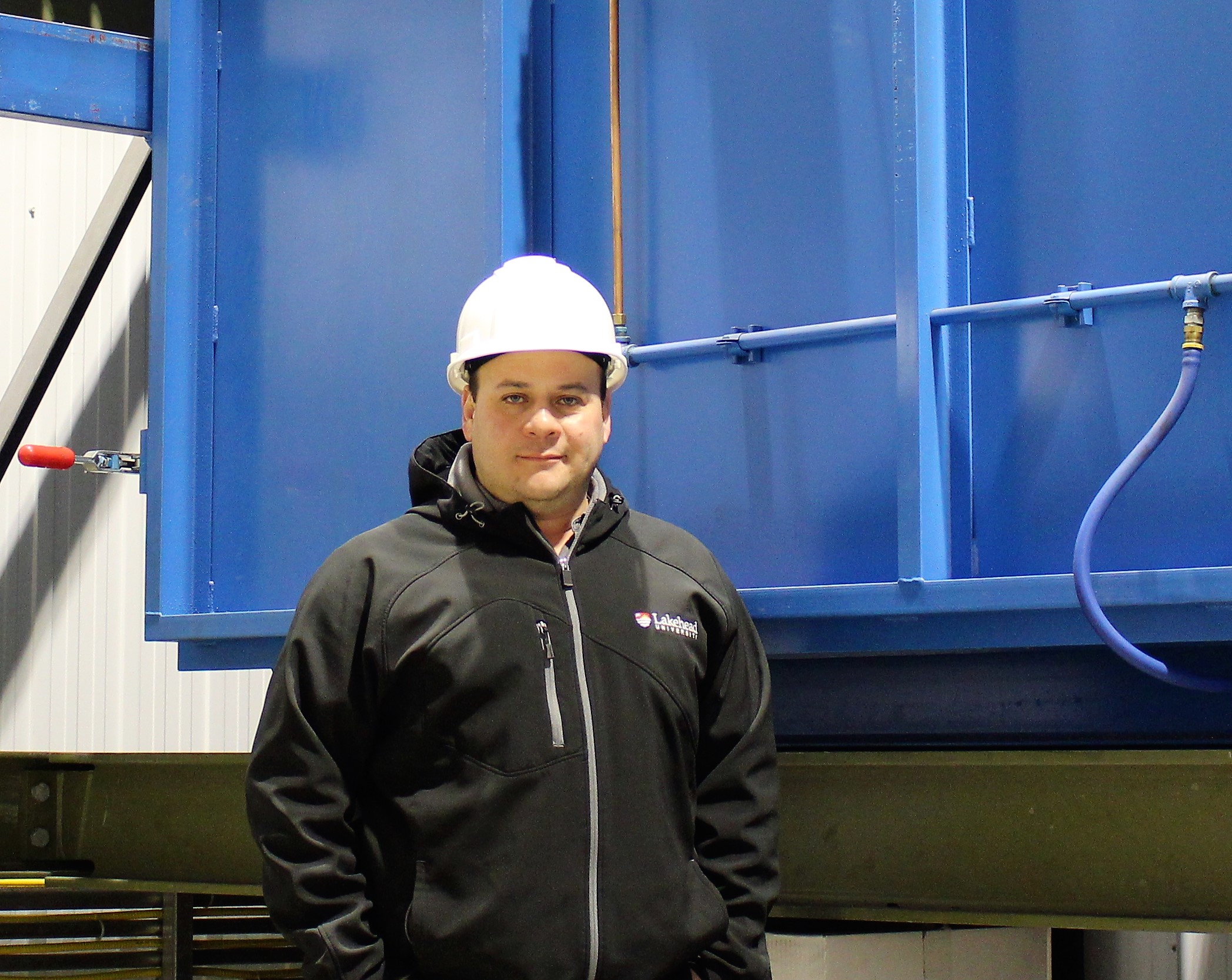Research in Action: Mass timber building components tested at one-of-a-kind lab
BY JULIO HELENO GOMES
Originally published in The Chronicle Journal on July 21, 2020


(left) Dr. Sam Salem, lab’s founder and director and an associate professor in Lakehead’s department of Civil Engineering, (right) doctoral student, Adam Petrycki
Tucked in a corner of Lakehead University’s campus, overlooking the placid waters of the McIntyre River, sits a nondescript building. While it may not attract much notice, this facility is the centrepiece of research that may pave the way for new kinds of materials to be used in modern building construction.
The Fire Testing and Research Laboratory boasts a custom-designed furnace that provides crucial data on the fire resistance of construction materials, building components such as beams and columns, as well as floor and wall assemblies. And with changes to national building codes that allow wood as a primary material in buildings up to six storeys in height, the benefit to local forestry and manufacturing could be significant.
“Without this facility I wouldn’t have this opportunity for advanced research in this fast-developing area of structural fire engineering, and also to help businesses develop innovative products and to serve the community,” says Dr. Sam Salem, the lab’s founder and director and an associate professor in Lakehead’s department of Civil Engineering.
This world-class fire testing facility allows the testing of new engineered-wood products taking place at Lakehead. At the Civil Engineering’s structures lab, products such as glued-laminated timber (glulam) and cross-laminated timber (CLT) are tested for strength, durability and their behaviour under normal stresses.
Next door at the fire lab, the materials are subjected to various fire scenarios, where temperatures in the furnace can reach 1,300 degrees Celsius. “Testing structural components and assemblies in the fire lab is the final stage in the research program, which is basically the main thing we look at to see how the building components behave or can withstand loads when exposed to fire,” Salem explains. “We have to design a safe building system that can first stand the load without the fire, then we expose it to the fire as the extreme loading condition.”
Opened in May 2016 at a cost of more than $1.2 million, the fire lab is the only facility of its kind at a Canadian university.
“This is very unique testing because there are very few facilities around the world that can test like this under this extreme temperature,” says Salem.
Internationally recognized as an expert in the field of structural fire engineering, Salem has conducted dozens of large-scale research projects since he arrived at Lakehead in 2012. Over the years, he has helped train several dozen highly qualified personnel, such as post-doctoral fellows and graduate students. Recently, he and graduate student Cory Hubbard have filed a patent for an innovative beam-end connection configuration for mass timber structural frame systems, which can stand fire exposure for an hour without any additional fire protection.
Salem’s doctoral student, Adam Petrycki, is involved in a project regarding the behaviour of timber-concrete composite floor systems at normal and elevated temperatures, focusing on their use in mid- and high-rise timber construction. His role is to develop a research plan, design and carry out an experimental study, analyze the results and then develop a methodology for their design and application in future construction projects.
The benefits, Petrycki explains, will be to potentially increase the use of this type of mass timber systems in multi-storey buildings. With a plentiful and renewable resource such as wood, Canadian forestry sector and wood companies can develop more mass-timber products for domestic use and export.
“The field of heavy timber construction and the fire safety of buildings is an area of research I’m passionate about, and being able to conduct experimental studies in the unique setting of the LU fire lab has been a unique and rewarding experience,” Petrycki says.
Salem has attracted more than $1.6 million in research grants and awards, from, among others: the Natural Sciences and Engineering Research Council of Canada, Canada Foundation for Innovation, Ontario Centres of Excellence, the Northern Ontario Heritage Fund Corporation, the Ontario Mass Timber Institute, and the provincial Ministry of Natural Resources and Forestry.
Research in Action highlights the work of Lakehead University in various fields of research.


